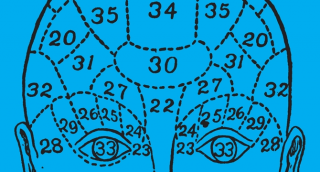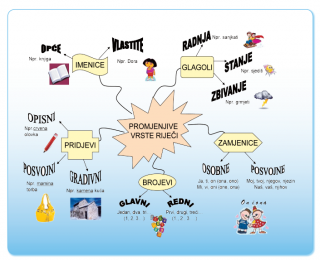pametneglavice https://blog.dnevnik.hr/pametneglavice
nedjelja, 29.01.2017.
ČITANJE NA GLAS
http://www.citajmi.info/citanje-naglas/
Čitanje u obitelji
Glasno čitanje u obitelji može postati ritual tijekom djetetovog odrastanja.
Glasno čitanje može postati aktivnost koja zbližava tinejdžere i mlađu braću i sestre. Bake i djedovi, ujne i ujaci, tete i stričevi te bliži i dalji rođaci mogu čitati djeci dok s njima provode vrijeme. Tako se jednostavno mogu stvoriti nove prilike za glasno čitanje djeci svih uzrasta.
Trajanje čitanja
Čitati treba onoliko dugo dok djeca žele slušati. Djecu ne treba prisiljavati na slušanje priče. S vremenom djeca razvijaju koncentraciju pa se vrijeme slušanja priče produljuje. Samo 15 minuta glasnog čitanja dnevno pomaže djetetovu cjelokupnom razvoju.
Neka djeca vole slušati priču dok crtaju ili se igraju nekom igračkom pa je i to preporučljivo.
Čitanje naglas djeci od rođenja
Čitajte djeci naglas od rođenja kako bi ona...
...mogla povezati čitanje i knjige s ugodnim osjećajima.
...mogla čuti zvukove, rime i riječi.
...mogla koristiti svoja osjetila sluha, vida i opipa.
...mogla stvarati zvukove – od gugutanja do riječi.
...mogla pokazati na sliku, a osoba koja čita imenovati to što dijete pokazuje.
...počela razumijevati da slike prikazuju određene predmete iz njihove okoline.
...dakako – mogla uživati u glasnom čitanju!
NEKA VOLE ČITATI!
petak, 27.01.2017.
MITOVI O ADHD-U
Attention-Deficit Hyperactivity Disorder (ADHD) is characterized by symptoms of inattention, hyperactivity, and impulsivity. It results in significant functional impairments throughout the lifespan. Despite the abundance of research on ADHD, there remain several significant misconceptions concerning this disorder. Specifically, misconceptions surround the origin of academic difficulties in these children, as well as the classification, neurological basis, and treatment of this disorder. The purpose of this article is to dispel such myths and provide accurate information on ADHD, along with practical strategies for educators of students with ADHD
From time to time, all children are inattentive, hyperactive, and impulsive. In fact, it is normal and expected at various developmental stages to exhibit more or less inattention, hyperactivity, and impulsivity. At mild to moderate levels, these characteristics and behaviours tend to be transient and do not significantly interfere with normal functioning. However, when inattention, hyperactivity, and impulsivity become severe and persist across different settings, they can have detrimental effects on many aspects of a child’s functioning. Children who meet diagnostic criteria for Attention-Deficit Hyperactivity Disorder (ADHD) experience more severe symptoms of inattention, hyperactivity, and impulsivity and consequently tend to experience significant challenges in various domains (psychological, behavioural, social, etc.) and across multiple settings. Figure 1 provides some examples of various outcomes associated with ADHD in relation to different areas of functioning.
File 6422
With regards to school functioning, children with ADHD experience significant impairments with far-reaching and lifelong implications. At the preschool level, children with high levels of inattention, hyperactivity, and impulsivity face challenges in their relationships with their teachers and peers, as well as difficulties building basic literacy, math, and language skills. At the elementary school level, these difficulties often persist and can even become more severe, resulting in continued academic struggles for these children. Not only do they experience lower grades, poor test performance, and academic underachievement, they are also more likely to be placed in special education and to be suspended or expelled for behavioural problems. This trajectory often continues at the high school level, where teenagers with ADHD continue to struggle. They tend to have lower academic attainment, as well as more behavioural and academic problems. In adulthood, those whose difficulties persist face challenges in developing and implementing the skills necessary to succeed in postsecondary education and stable employment.[ii]
Myth #1: Hyperactivity and impulsivity are the main causes of academic problems for children with ADHD.
Hyperactivity and impulsivity can be very challenging to deal with in the classroom, and one might assume that these symptoms are the key cause of the school-based difficulties faced by children with ADHD. This is not the case. Rather, research consistently shows that inattention is the most significant factor associated with the academic problems faced by children with ADHD.[iii] This has important implications for how ADHD is addressed in the school setting. This is not to say that these behaviours should be ignored, but rather that interventions targeting problematic behaviours should go hand in hand with interventions designed to target inattentive symptoms.
Myth #2: ADHD is a behavioural disorder
Another misconception about ADHD surrounds its classification. Given the behavioural manifestations of inattention, hyperactivity, and impulsivity, one might conclude that ADHD is a behavioural disorder and until recently it was classified as such. However, an abundance of neuroscience research now unequivocally demonstrates that ADHD originates in the brain. As such, ADHD is now classified in the fifth edition of the Diagnostic and Statistical Manual of Mental Disorders as a neurodevelopmental disorder,[iv] emphasizing its neurological and biological origins in the childhood period.
Myth #3: ADHD symptoms are localized to a single brain region
ADHD does not involve just one part of the brain, but rather is related to dysfunction in several areas. Previous understandings of the neurobiology of ADHD suggested that only the frontal-striatal circuits were dysfunctional; however, new research suggests that several other areas of the brain contribute to ADHD symptomatology,[v] specifically, the cortical regions, subcortical regions, and the cerebellum. Specific areas within each of these regions are related to different symptoms and behaviour.
These diverse brain areas are associated with an array of behaviours and functions. We can understand how these areas of functioning relate to ADHD by examining what is happening in each of these areas in individuals with ADHD. This is done by using magnetic resonance imaging (MRI) to look at the activation patterns in the brains of individuals with ADHD, and comparing the patterns to those without ADHD. It is also important to note that individuals with ADHD often have co-occurring problems that may also impact the structures and functions of other brain regions.
Myth #4: ADHD only involves over-activation of associated neural areas
There is a popular misconception that brain areas are over-activated for individuals with ADHD, likely because many overt behaviours associated with ADHD involve overactivity and hyperactivity. In fact, it has been established that ADHD actually involves both hypoactivation (underactivation) and hyperactivation (overactivation) of brain regions.[vi] Different patterns of activation are seen in different areas of the brain.
For instance, the prefrontal cortex has been found to be hypoactivated (less activated) when required to engage in inhibitory responses in individuals with ADHD compared to those without ADHD.[vii] Hypoactivation of the prefrontal cortex causes executive function and working memory impairments. Further, the anterior cingulate cortex has also been identified as being hypoactivated in individuals with ADHD.[viii] The anterior cingulate cortex is involved in anticipation, impulse control, empathy, decision-making, and emotion. Therefore, hypoactivation in this area results in impulsivity, poor/risky decision-making, difficulty anticipating rewards/consequences and right/wrong, as well as problems with regulating emotion.
By contrast, the visual systems and motor systems within the brains of individuals with ADHD appear to be hyperactivated. Hyperactivation of these areas results in increased distractibility, and increased motor movements and behaviours, such as fidgeting, moving around, and appearing as if the child is being run by a motor. Figure 2 summarizes the various areas of the brain that have been identified as being hypoactivated or hyperactivated in individuals with ADHD and provides some strategies that educators can use to address these difficulties.
File 6416
Myth #5: The neurological correlates of ADHD are completely understood
There is still much to be discovered about the neurobiological origins of ADHD. Although many brain regions have been implicated in the development and presentation of ADHD, there has been some disagreement on which areas are most influential. Furthermore, ADHD often co-occurs with other disorders, meaning that when a child is diagnosed with ADHD, it is very likely that they have another diagnosis, such as a learning disorder or a behavioural disorder.[ix] Co-occurring disorders make it difficult to distinguish which brain areas are involved with each disorder.
Myth #6: Biological treatments are the only option for children with ADHD
Indeed, there are many things that parents and educators can do to help their students with ADHD. The research has shown that behavioural and psychosocial interventions can be effective for treating ADHD symptoms.[x] While medications also have their place in treating ADHD, the message here is that there are school-based options available that can be implemented by educators themselves. Figure 3 provides a summary of some evidence-based interventions for ADHD, as well as tips on how they can be implemented.
File 6487
THOUGH MUCH REMAINS to be learned about the neurological correlates of ADHD, it is clear that ADHD is a complex disorder that affects many aspects of functioning, both in and out of the school setting. Educators have a critical role to play in the life of a child with ADHD and are ideally situated to implement helpful strategies to improve academic performance and behaviour, consequently benefitting the well-being and learning experiences of children with ADHD.
Special thanks to Stacey Kosmerly, Julia Boggia, and Natt Dugan at the University of Ottawa’s ADHD & Development Lab for their invaluable contributions and assistance in the preparation of this article.
Oznake: adhd
NEUROMITOVI 3.DIO
Neuromyth 3:
Short bouts of coordination exercises can improve integration of left and right hemispheric brain function.
The third most prevalent neuromyth among teachers (on average, 77 percent of them believe this myth) is that short bouts of coordination exercises (for example, touching your left ankle with your right hand, and then your right ankle with your left hand, or touching your bellybutton with your right hand and your chest near your collarbone with your left index finger and thumb, etc.) can improve the integration of left and right hemispheric brain function, “activate” the brain, and help students learn. While it has been clearly proven that exercise and physical fitness have a significant impact on the cognitive skills of students and on their brain function,6 no studies show that short bouts of coordination exercises that do not require relatively intense physical effort “awaken” the brain, improve communication between the two hemispheres of the brain, or improve learning.7
The popular exercise program proposed by Brain Gym® International is at least partially based on this neuromyth. Introduced in more than 87 countries, including Canada, this program offers schools and teaching staff very expensive training and materials that promise to “dramatically improve” concentration, memory, grades (in reading, writing, and math), and attitudes. The problem with the program is not only that Brain Gym’s exercises are not supported by any credible empirical studies,8 but also that the rationale behind this approach has long been invalidated by research
NEUROMITOVI 2. DIO
Neuromyth 2:
Differences in hemispheric dominance (left brain, right brain) can help explain individual differences among learners.
After the misconception about learning styles, the second most prevalent neuromyth among teachers, with an average prevalence of 80 percent (see Figure 1), is the belief that the differences observed between learners may be due to the dominance of one of the two hemispheres of the brain. According to this mistaken belief, students are either “left-brained” (with a dominant left hemisphere) or “right-brained” (with a dominant right hemisphere). Typically, according to this misconception, left-brain learners are more analytical and logical, whereas right-brain learners are more creative. Building on this idea, some educational specialists suggest not only that the teaching method should take into account the student’s dominant hemisphere, but that it should also bring the two hemispheres to an equilibrium or further develop the right brain, which would be under-developed in many students.4
Brain images of over 1,000 individuals... do not support the idea that some people have a hemispheric dominance (“left brain” or “right brain”).
To our knowledge, there are no scientific studies showing that adapting the teaching method to a student’s dominant hemisphere is beneficial to the learner. In fact, the very notion of hemispheric dominance is problematic. Though it is actually true that some functions or cognitive abilities are associated with one side of the brain or the other (language skills being one), researchers recently analyzed the brain images of over 1,000 individuals and came to the conclusion that the data do not support the idea that some people have a hemispheric dominance (“left brain” or “right brain”) and a greater brain connectivity in one of the two hemispheres.
Oznake: zanimljivo
NEUROMITOVI 1. DIO
Neuromyth 1:
The most prevalent neuromyth in education is the idea that students have different learning styles; in other words, that their ways of learning are fundamentally different and require different educational practices. In the European and Asian countries where this has been studied, on average, 96 percent of teachers believe this neuromyth (see Figure 1 below). The belief that brain function differs greatly from one student to the next, and consequently that some students are “visual” learners while others are more “auditory” or “kinesthetic” learners, is often implicit in this notion of learning styles.
Although the notion of learning styles has been omnipresent in education literature for years, surprisingly few studies have investigated whether adapting teaching methods to learning styles actually improves learning. Remarkably, those that used a sound methodology obtained results that counter the idea that teaching methods adapted to a student’s learning style are beneficial.3
Current studies have not examined every possible learning style, and it is possible that we will eventually discover learning styles that teaching should be adapted to. In the meantime, however, while some students may prefer visual, auditory, or kinaesthetic learning, there is no credible scientific data to suggest that there is any benefit in teaching them using their preferred learning style. (Of course, good teachers find a variety of ways to engage students with the material they are learning; this is not what is being discussed here. What has been refuted is the notion of attempting to match teaching to individual students’ supposed learning style.)
IZVOR: education-canada/article/neuromyths-education
Oznake: zanimljivo
MIND MAPPING TEHNIKA KREATIVNOG RAZMIŠLJANJA I UČENJA
Istraživanja mozga su pokazala da se memoriranje uveliko potiče upotrebom boja i slika. No, 95% ljudske populacije zapisuje podatke na linearan način uz pomoć jedne boje - uobičajeno crne ili plave. Takav način bilježenja je vizualno dosadan, a suhoparna monotonija linearnog zapisivanja dovodi mozak u semi-hipnotički trans, čineći prisjećanje pročitanoga ili zabilježenoga često nemogućim. Kod obrazovanja i u svakodnevnom poslovanju su funkcije lijeve polutke mozga više zastupljene.
Budući da je aktivirana samo jedna polovica ukupnog kapaciteta mozga, tada su i rezultati učenja i pamćenja samo polovični obzirom na to kakvi bi bili u slučaju da se koristi ukupni potencijal mozga. Stoga je sedamdesetih godina 20. stoljeća Tony Buzan razvio Mind Mapping®. To je tehnika ili sistem za organizaciju misli, pri čemu je učenje, pohranjivanje, kreiranje kompleksnih sadržaja i misli moguće pohraniti na vrlo malo prostora na papiru. Uobičajeno je da se procese toka misli ili analiziranja obrađuje lijevom polovinom mozga, tj. monotono i linearno s vrlo malo maštovitosti. Sama tehnika se bazira na znanstvenim saznanjima o tome kako radi mozak, na koji način pohranjuje i obrađuje informacije, te kako memorija zadržava i na koji se način prisjeća tih informacija. Upotrebom tehnike Mind Mapping® nastaju Mind Maps (mape uma).
Mapa uma je po definiciji izraz briljantnog razmišljanja i prema tome predstavlja prirodnu funkciju ljudskog uma. To je moćno grafičko sredstvo koje osigurava univerzalni ključ za oslobađanje potencijala mozga. Mapa uma može biti upotrijebljena u svakom aspektu života u kojem će poboljšano učenje i jasnije razmišljanje povećati čovjekov učinak. U današnje doba upotreba memorijskih i misaonih procesa postaje sve zahtjevnija i sve brža, te Mind Mapping® otvara nove dimenzije za razvoj, sortiranje i pohranjivanje misli. Upotrebom Mind Mapping® tehnike postiže se:
- razvoj kreativnog razmišljanja
- povećavaju se motivacija i koncentracija
- ušteda vremena
- povećava se interes za materiju ili informacije koje se obrađuju
- ostvaruju se vlastiti mentalni potencijali
- poboljšava se komunikacija
- uči se lakše i s uživanjem
- smanjuje se osjećaj frustracije
- jasnije se postavljaju ciljevi
- preglednije je određivanje prioriteta
- poboljšava se samouvjerenost
Tehnika se može upotrebljavati u područjima svakodnevnog života gdje se zahtjeva organizacija informacija, ideja, misli, pa čak i vremena.
Neki od primjera su:
1. obrazovanje: stvaranje bilježaka, memoriranje, učenje, polaganje ispita, pisanje radova
2. poslovni svijet: prezentacije, organizacije projekata, vođenje sastanaka
3. osobna upotreba: organizacija proslava, pisanje priča i romana, planiranje dnevnihaktivnosti, osobni razvoj, donošenje odluka
4. obitelj: planiranje financija, organizacija obiteljskih okupljanja
Upotrebom Mind Mapping® tehnike rješenja nekog problema ili donošenja odluka dobivaju novu dimenziju. Sama činjenica da Mind Mapping® tehnikom povećavamo iskoristivost mozga i približavamo se «genijalnosti», čini nas optimističnijima. A istovremeno vježbamo, kako bi to rekao Hercules Poirot, male sive stanice mozga.
Autor: dr.sc. Marija Pavkov, BLI
Doktorirala je kemiju na Sveučilištu u Grazu gdje je radila kao asistentica. Ujedno je i licencirana BLI trenerica (Buzan Licenced Instructor) za brain friendly programe Buzan Centra iz Engleske koji služe za razvoj tzv. mentalnog opismenjavanja djece i odraslih. Održava seminare i treninge iz područja Mind Mappinga, tehnika pamćenja, te novih/brzih tehnike učenja. Razrađuje koncepte za cjeloživotno učenje, te metodologije za obrazovanje odraslih. Trenutno u Austriji izrađuje doktorat iz područja obrazovanja odraslih, te živi na relaciji Graz-Zagreb.
Preuzeto s Biznis.hr
TEHNIKE BRZOG ČITANJA – MIT ILI ISTINA?
30.03.2012./izvor: educentar.net
Zagovornici tehnika brzog čitanja tvrde da jest moguće. Dok prosječna osoba čita brzinom od oko 250 riječi u minuti (otprilike malo više od pola stranice knjige) uz 70 postotno razumijevanje pročitanog, brzi čitači tvrde da postižu brzinu od prosječno 550 do 600 riječi po minuti uz jednaku razinu razumijevanja.
Postoji i Svjetsko prvenstvo u brzom čitanju, na kojem se kao jedan od glavnih faktora odlučujućih za pobjedu razmatra razumijevanje pročitanog. Finalisti tog natjecanja sposobni su pročitati između 1000 i 2000 riječi u minuti, uz razumijevanje teksta od 50% ili više. Trenutna svjetska prvakinja Anne Jones čita 4700 riječi u minuti sa 67 postotnim razumijevanjem.
Tečajevi brzog čitanja
Vjerojatno ste već čuli za razne tečajeve ili sam pojam brzog čitanja, no niste znali o čemu se tu točno radi i kako se to brže čitanje postiže.
Brzo čitanje nije jedan jedini postupak, već se radi o nizu različitih metoda koje, kad ih se koristi zajedno ili odvojeno, pomažu da se čita brže, ali uz jednako dobro razumijevanje materije. Cilj je da se čitatelj što kraće zadržava na pojedinačnim dijelovima teksta, a da ipak uspije shvatiti njegov smisao.
Pitate se kako je moguće čitati brzo?
Metoda se zasniva na prirodnim sposobnostima čovjeka da izoštri fokus i proširi percepciju. Na taj se način omogućuje brže uočavanje relevantnih informacija u tekstu, širi memorija, povećava se sposobnost razumijevanja teksta te se postiže značajna ušteda vremena pri čitanju.
Raznim tehnikama uklanjaju se navike koje nas u normalnim okolnostima sputavaju da iskoristimo kapacitete svojeg mozga i čitamo čak preko 1000 riječi u minuti.
Razvoj tehnika brzog čitanja
Amerikanka Evelyn Wood, jedna od pionirki u razvijanju i podučavanju tehnika brzog čitanja, održavala je tečajeve zvane Reading Dynamics, koje su polazili i hvalili i američki predsjednici John F.Kennedy i Jimmy Carter. Na tu ideju došla je nakon istraživanja kojima je ustanovila da pojedini ljudi dostižu brzinu čitanja i do 1500 riječi u minuti. Proučavanjem takvih pojedinaca izvukla je niz tehnika kojima se oni služe da bi povećali brzinu čitanja, a pritom zadržali sposobnost razumijevanja i pamćenja teksta. Bazične tehnike koje koriste Reading Dynamics, ali i brojni drugi sistemi podučavanja bržeg čitanja su sljedeće:
Korištenje vodiča
Jedna od najosnovnijih tehnika bržeg čitanja predlaže da koristimo svoj prst, olovku ili nekakav drugi prikladni predmet kao vodič dok čitamo. Mnogi od nas tako su čitali dok su bili djeca, pomičući prst redak po redak po svakoj liniji teksta. Ova tehnika navodno ubrzava čitanje tako što nam pomaže da proširimo svoj vizualni raspon, odnosno da odjednom „upijemo“ čitavu rečenicu. Pomaže i pri eliminaciji subvokalizacije, što je još jedan važni faktor za postizanje veće brzine čitanja.
Eliminacija subvokalizacije
Subvokalizacija je proces izgovaranja pročitanog na glas ili u mislima.
Najčešće se radi o bezglasnom govoru koji se pojavljuje unutar našeg uma kada čitamo riječi. Osoba riječ koju čita izgovara u glavi, a mnogi imaju i naviku da 'ustima oblikuju' riječi koje čitaju.
Eliminacijom subvokalizacije vraćamo svoj fokus u potpunosti na tekst, te se zbog toga otklanjanje te navike smatra ključnim u postizanju bržeg tempa čitanja. Kako bismo značajno brže čitali, trebalo bi smanjiti ili potpuno ukloniti običaj čitanja u sebi.
Ako uspijemo potisnuti nagon za „razmišljanjem naglas“ prestajemo gubiti vrijeme na mentalno izgovaranje slogova te se možemo u potpunosti skoncentrirati na značenje riječi.
Izbjegavanje vraćanja unatrag
Tijekom čitanja, često se vraćamo unatrag, na već pročitane dijelove teksta, kako bismo ponovili ključne riječi ili nešto što prije nismo razumjeli. Iako to pridonosi boljem razumijevanju i pamćenju pročitanog, ipak oduzima dobar dio vremena. Pristaše ove metode brzog čitanja smatraju da je najbolje da uvijek nastavljamo čitati dalje, u nadi da ćemo propuštene informacije pokupiti kasnije.
Fokusiranje na ključne riječi
Zagovornici ove tehnike tvrde da većina riječi koju sadrži određeni odlomak ili stranica ne govori puno o ideji koju taj odlomak treba prenijeti čitatelju, već da je dovoljno da obrati pozornost na ključne riječi. One se obično ponavljaju kroz tekst i predstavljaju ključ za razumijevanje osnovne ideje napisanoga. Čitatelju se savjetuje da ostatak teksta „skenira“ i ne gubi previše vremena na njemu.
Mit ili istina
Iako je polaznika brzog čitanja sve više i popularnost tečajeva raste, ove tehnike doživile su i brojne kritike. Zagovornici ovih metoda tvrde da se ne radi o ničem nevjerojatnom, jer zapravo i mi, „obični“ čitači, koristimo iste tehnike poput vodiča kroz tekst ili utišavanja subvokalizacije, samo u puno manjoj mjeri. Oni smatraju da je ključ u praksi- da uz vježbanje i daljne razvijanje tih tehnika svatko može postati brži čitatelj. Kritičari sistema brzog čitanja obično kao glavni nedostatak spočitavaju gubitak smisla teksta. Oni smatraju da se povećanjem brzine čitanja uvijek smanjuje razumijevanje pročitanog, bez obzira na fokusiranje čitatelja i naučene metode kojima se koristi.
Ukoliko vas brzo čitanje intrigira i mislite da bi vam moglo pomoći u svladavanju štiva koje morate ili želite čitati, nema druge nego da sami donesete svoj sud. Tečajevi koji su nude su brojni, a na raznim web stranicama sada se nude i uz značajne popuste. Uz to, uvijek postoji mogućnost da postanete samouki brži čitatelj. Knjiga „Vještine čitanja“ (Reading Skills) već spomenute začetnice brzog čitanja Evelyn Wood može poslužiti kao izvor dodatnih savjeta i informacija o navedenim tehnikama brzog čitanja, a i kao materija na kojoj ćete naučene metode po prvi put izvježbati.
S.Šuća












